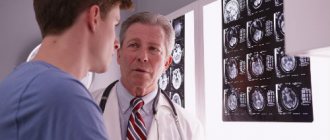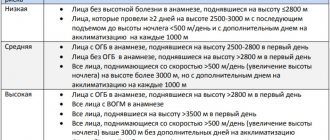After eating, some people feel unwell—dizzy. Often, such symptoms indicate the development of certain pathological processes in the body.
The most common cause of this condition is food poisoning. In such a situation, there is nausea, vomiting and weakness. It is also common to feel dizzy after eating and during pregnancy, especially in the first trimester. The feeling of dizziness can also be associated with adverse reactions to taking certain medications, severe stressful situations and experiences.
Causes of dizziness
- Overeating after a long break, leaving a strict diet or fasting.
- Food allergies can be caused by food additives, which are abundant in most foods, as well as sweets or protein foods.
- Reaction to foods containing the amino acid tyramine - chocolate, gourmet cheeses, overripe fruits, marinades, citrus fruits.
- Hypovolemia is a decrease in blood volume in the body. This condition is characterized by constant thirst, weakness, rapid heartbeat, blue skin, and dizziness.
- Dumping syndrome is a pathological condition caused by a decrease in blood flow to the brain and heart, hyper- and hypoglycemia.
There are early and late dumping syndromes.
Early dumping syndrome
It appears immediately after eating, most often in people who have undergone surgery on the stomach or duodenum, but can also occur in non-operated people who have impaired stomach function.
Milk, carbohydrate products, liquid foods, and eating large portions contribute to the development of dumping syndrome.
The essence of the pathology is that food is not digested in the stomach, but immediately passes into the intestines, where increased pressure occurs and irritation of the mucous membrane occurs. As a result, a large volume of blood flows to the intestine, and a shortage of blood occurs in the heart and brain. Carbohydrates quickly pass into the blood, and blood sugar increases. As a result, blood pressure sharply decreases or increases, hormones are released into the blood, and symptoms of hyperglycemia—high blood sugar—appear: dizziness, nausea to vomiting, severe weakness, cold sweat.
Survey
Nausea after eating most often indicates the presence of diseases of the digestive system, so the examination is carried out by a gastroenterologist, and the diagnostic search involves a comprehensive study of the morphological and functional characteristics of the patient’s gastrointestinal tract. When making a diagnosis, modern laboratory and instrumental methods are used, of which the most informative are:
- Sonography
. Abdominal ultrasound is prescribed as a screening method for all patients with long-term dyspeptic disorders. Ultrasound examination allows to identify nonspecific signs of ulcerative-destructive and inflammatory processes. If necessary, targeted ultrasound of individual organs is performed. - Gastrointestinal endoscopy
. Endoscopy is the most informative method for diagnosing diseases of the upper digestive tract, which are accompanied by nausea. According to indications, the study is supplemented with a biopsy. If it is necessary to visualize the entire length of the small intestine, video capsule endoscopy is used. - Radiography
. X-ray examination with contrast with a barium mixture is effective in detecting ulcerative-destructive processes in the digestive tract. The method is not specific enough for the diagnosis of inflammatory pathologies, so it is advisable to use it in combination with gastrointestinal endoscopy. - Study of gastric secretion
. Nausea associated with food may indicate disturbances in the acid-producing function of the stomach, so 24-hour pH testing is prescribed. The amount of total and free hydrochloric acid on an empty stomach and after the administration of drugs that stimulate secretion are also assessed. - Stool analysis
. A standard coprogram allows one to suspect malabsorption of food and various inflammatory processes in the intestines, which are accompanied by dyspeptic symptoms. Additionally, bacteriological culture of stool and analysis for helminth eggs are performed to exclude an infectious etiology of the process.
A biochemical blood test is necessary to exclude biliary and hepatic pathologies that cause nausea after eating. If a patient has a general infectious syndrome, specific serological tests are carried out to search for antibodies to pathogenic microorganisms. Intraesophageal manometry is prescribed to assess the motor function of the organ and the coherence of the sphincter apparatus.
Ultrasound of the abdominal organs
Late dumping syndrome
It is caused by the release of large amounts of insulin in response to high sugar levels. Then, after a few hours, the sugar level drops sharply, and hypoglycemia develops - a lack of glucose. This condition is similar to hypoglycemic coma in diabetics: pallor, cold and clammy sweat, dizziness, trembling, yawning and drowsiness, feeling of hunger. This is a dangerous condition: the blood supply to the heart is disrupted, the blood carries oxygen less well, and tissue oxygen starvation occurs - hypoxia. Possible development of acute heart failure.
In severe forms of dumping syndrome, anorexia and exhaustion may develop.
Other causes of morning sickness
After excluding the above diseases from the list of causes, the following causes can be considered:
- Pregnancy. Intoxication and nausea in the morning often occurs in pregnant women, especially in the early stages. This is a normal reaction of the body to significant changes and hormonal changes. It is very important to completely eliminate medications used to treat the digestive tract during pregnancy. These drugs can have an extremely negative impact on the health of the patient, the unborn child and the course of pregnancy. Therefore, you will have to endure this illness and use folk remedies, but be sure to consult a doctor.
- Migraine. Morning sickness on an empty stomach may precede a severe headache. You will likely also experience a lot of noise and increased sensitivity to smells.
- High blood pressure (hypertension). The problem of morning sickness may be accompanied by headache and dizziness. If you do not pay attention to these symptoms in a timely manner, you risk developing this disease, which in turn can lead to a stroke.
- Cardiovascular diseases - less often, nausea on an empty stomach appears with heart failure or developing myocardial infarction. If nausea is accompanied by pain, a feeling of heaviness and tightness behind the sternum, numbness or tingling in one half of the body, you should seek medical help as soon as possible, as this may be an incipient myocardial infarction.
- Increased intracranial pressure - nausea and regurgitation in an infant can occur when the pressure inside the ventricles of the brain increases.
What to do
Single cases of dizziness after eating are not dangerous and do not require treatment.
If such a condition is associated with disordered eating, too long gaps between meals, you just need to adjust your diet, try to eat more often and in small portions.
In case of food allergies, it is necessary to identify and exclude from the diet foods that provoke an allergic reaction.
But dumping syndrome requires treatment from a gastroenterologist or abdominal surgeon.
For mild stages of the disease, treatment includes:
- taking medications that normalize digestive processes;
- diet and nutrition;
- elimination of symptoms of pathology;
- taking sedatives;
- physiotherapeutic procedures – electrical stimulation and electrosleep.
If this does not help, surgical treatment is used - gastric surgery.
Causes of nausea after eating
Dyspeptic symptoms are sometimes detected in completely healthy people and are associated with errors in diet. Nausea occurs when overeating, which is caused by stretching of the walls of the stomach and the flow of nerve impulses into the corresponding parts of the brain. This manifestation is considered a normal variant and does not require treatment. Pregnant women often complain of nausea after eating. This symptom often develops in the first trimester and is caused by functional changes in the nervous system and distortion of impulses entering the central nervous system from the abdominal organs.
Food allergies
Allergic reactions to certain foods often include stomach discomfort and nausea. Nausea is caused by irritation of nerve endings by immunoglobulins and inflammatory agents, which are formed in large quantities when foreign proteins are ingested with food. The impulses generated by the receptors stimulate the vagus nerve and reach the vomiting center in the brain. Most often, allergies occur to egg whites, dairy products, citrus fruits, and chocolate.
Nausea with food allergies appears immediately after eating trigger foods, usually combined with skin rashes, itching, conjunctivitis and serous rhinitis. Symptoms are aggravated with the development of allergic gastritis with eosinophilic infiltration of the gastric mucosa. Nausea after eating is also caused by impaired motor function of the organ, spasm of the pyloric sphincter, and gaping of the cardia. In addition to dyspepsia, weakness, pale skin, and dizziness are possible.
Gastritis
Nausea after eating, along with other dyspeptic disorders, is considered the main manifestation of acute inflammation of the epithelial lining of the stomach. The symptom is provoked by the action of inflammatory mediators on nerve endings and the additional irritating effect of incoming food. The acute process is characterized by the development of the clinic 6-12 hours after exposure to the pathological factor. Nausea some time after eating is possible with gastritis with a decrease in secretory activity, which is caused by stagnation of chyme in the stomach and excessive stretching of its walls.
Other stomach diseases
Discomfort in the esophagus and stomach after eating foods can be caused by both inflammatory processes and other stomach diseases. The mechanism of development of nausea in this case is associated with impaired motility of smooth muscles and pathological visceral impulses, which results in increased activity of the vagus nerve and activation of the vomiting center. Nausea usually occurs 10-15 minutes after eating. Symptoms may result from:
- Atony of the stomach
. A decrease in the contractility of smooth muscles contributes to prolonged stagnation of partially digested food, which causes distension of the stomach. As a result, excess impulses from visceral receptors are formed, which enters the brain. The condition is aggravated after eating, since this further stretches the wall of the organ. Atony is manifested by profuse vomiting and heaviness in the abdomen. - Dumping syndrome
. Nausea associated with eating food is more typical for early dumping syndrome, which begins a quarter of an hour after a meal. The intake of undigested chyme with high osmolarity causes hypersecretion of water into the intestinal lumen and stretching of its walls. Patients complain of severe cramps, profuse diarrhea, and vomiting. The combination of dyspepsia and autonomic disorders is indicative: weakness, fainting, sweating. - Neoplasms
. Nausea after eating occurs with large benign tumors, which impede the passage of chyme and cause overstretching of the stomach walls. Painful discomfort in the stomach is also observed with malignant neoplasia. It is caused not only by mechanical reasons, but also by the growth of the neoplasm deep into the wall of the organ with damage to the nerve plexuses.
Poisoning
In case of poisoning with foods, herbal substances or drugs, the appearance of nausea is caused by the action of toxic substances on the chemoreceptors of the trigger zone located in the rhomboid fossa. Nausea often leads to vomiting and is combined with dyspeptic disorders: diarrhea, cramping pain in the epigastric region. The appearance of general symptoms - headache and dizziness, weakness, fainting - indicates massive intoxication, in this condition immediate medical attention is required.
Pathology of the pancreato-duodenal zone
The pancreas and the underlying parts of the digestive tract have a common innervation through the branches of the autonomic nervous system, so painful processes in these organs invariably lead to stimulation of the vomiting center in the medulla oblongata. Nausea occurs when visceral impulses are not strong enough to induce vomiting. In such cases, dyspepsia develops later - 1-1.5 hours after eating. Nausea is most typical for conditions and diseases such as:
- Duodeno-gastric reflux
. The reflux of concentrated bile into the stomach cavity causes irritation of its receptors, which manifests itself in the form of nausea. The condition is accompanied by bitter belching, heartburn, and dull pain in the epigastrium. In case of insufficiency of the pyloric sphincter with constant reflux of duodenal contents, chemical gastritis can develop, which is typically characterized by increased pain and vomiting of bile. - Erosive bulbitis
. Nausea with damage to the duodenal bulb is associated with both an inflammatory reaction and a violation of the secretion of bile and pancreatic enzymes due to dysfunction of the sphincter of Oddi. Erosive bulbitis does not have pathognomonic clinical signs and occurs under the guise of other gastrointestinal diseases. A dangerous complication of the disease is the development of bleeding with vomiting “coffee grounds”, melena. - Duodenostasis
. Stagnation of chyme in the lumen of the duodenum causes its stretching and the reaction of nerve endings with the formation of pathological impulses. The condition worsens after eating, which is associated with the intake of additional portions of food masses, a discrepancy between the contractions of the gastric sphincters and smooth muscles. Characterized by heaviness and pain in the abdomen, stool disturbances. - Alcoholic pancreatitis
. Nausea caused by food intake is associated with maldigestion and malabsorption due to insufficient supply of pancreatic enzymes. For pancreatitis, abundant stool with admixtures of neutral fats and undigested food, pain in the epigastrium and left hypochondrium are indicative. With alcohol abuse, symptoms are aggravated due to the central action of toxic metabolites of ethanol.
Diseases of the hepatobiliary system
Stretching the walls of the gallbladder and increasing pressure on the liver capsule stimulates visceral receptors, ensuring the entry of pathological impulses into specific nerve structures of the brain. Nausea after eating may be associated with an increased load on the corresponding organs of the hepatobiliary system, involving the nerve receptors of the duodenum and stomach in the process. In most cases, dyspeptic disorders are provoked by:
- Biliary dyskinesia
. Unpleasant sensations in the upper gastrointestinal tract after eating are caused by incoordination of contractions of the muscular membrane of the bile ducts, occurring against the background of disorders of the autonomic nervous regulation of the functioning of the digestive tract. The clinical picture of dyskinesia includes pain in the right hypochondrium, intensifying after eating fatty foods, stool disorders, and belching. - Inflammation of the gallbladder
. Nausea with cholecystitis is mainly caused by stagnation of bile and overstretching of the organ, which causes irritation of nerve endings and transmission of visceral impulses to the vomiting center. The manifestation intensifies after eating due to stimulation of the contractile activity of the inflamed bladder when chyme enters the duodenum. A combination of nausea with pain, periodic vomiting, and bitter belching is possible. - Postcholecystectomy syndrome
. Nausea is caused by pathological circulation of bile, causing irritation of the gastrointestinal mucosa, and intestinal distension due to malabsorption syndrome with increased gas formation. Nausea is accompanied by diarrhea with the release of foul-smelling grayish feces, pain, which is observed in 70% of patients, bitter belching and heartburn. - Liver echinococcosis
. A typical sign of a parasitic disease is nausea after eating mostly fried or fatty foods. In the early stages, dyspeptic disorders are combined with unmotivated weakness, headaches, and polymorphic skin rashes. If an echinococcal cyst ruptures, an allergic reaction with respiratory failure may begin.
Intestinal infections
Various microbial agents entering the gastrointestinal tract lead to damage to the mucous membrane and disruption of intestinal functions. The appearance of nausea is associated with pathological impulses from the gastrointestinal tract, resulting from irritation of nerve receptors and the direct action of pathogen endotoxins on the trigger zone in the brain. Nausea after eating is pathognomonic for infectious diseases that occur as gastroenteritis: escherichiosis, gastrointestinal salmonellosis, rotavirus and norovirus infections.
Is it possible to prevent the disease?
Yes, especially if it manifests itself in a mild form. Here are the doctors' recommendations.
- Eat 5-6 times a day in small portions. Take your time and chew your food thoroughly.
- Do not drink during or immediately after meals. You can drink half an hour to an hour before and half an hour to an hour after eating.
- Give preference to slow carbohydrates: cereals, pasta, rice, but it is better to limit fast carbohydrates: cakes, pastries, sweets, as well as sweet juices and drinks.
- Vegetables and fruits containing soluble fiber are useful: apples, plums, carrots, beets, cabbage.
- Protein foods: meat, fish, poultry, eggs will also be very useful
- Milk and dairy products can cause an attack, so consuming them is not advisable. You can try using lactose-free milk.
- If your blood pressure drops after eating, it is advisable to lie down for about twenty to half an hour.










